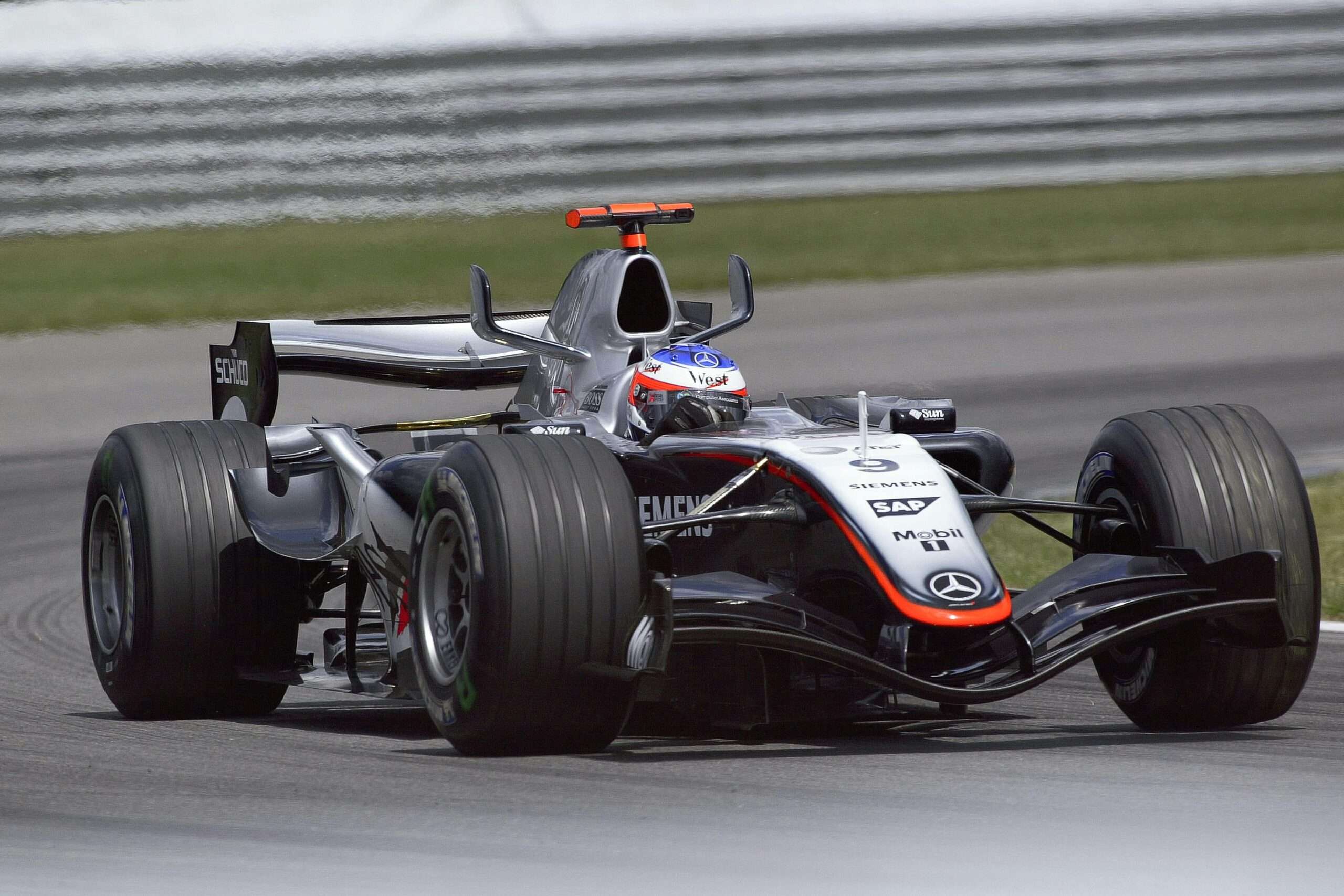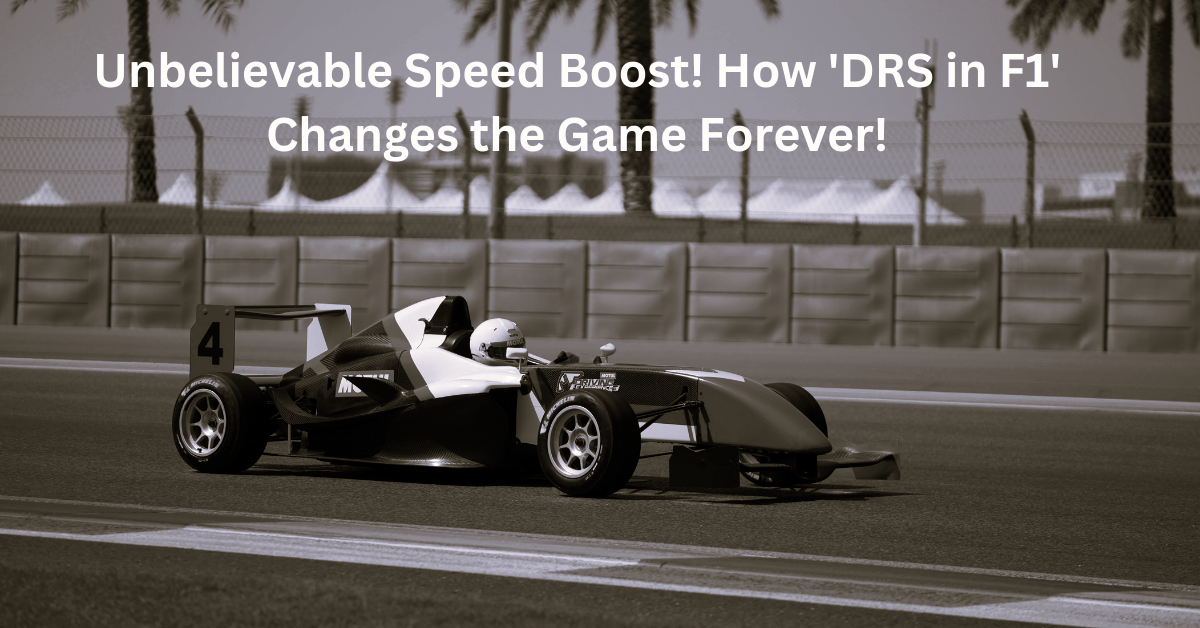Have you ever marveled at F1 races where cars zoom past others? Not mere horsepower, but the “DRS in F1″—the Drag Reduction System (DRS) makes these thrilling overtakes possible
Imagine the adrenaline rush of watching brightly colored cars battling for position at breakneck speeds. But overtaking in Formula 1 isn’t easy. These high-tech machines are built for incredible cornering, which creates a problem: the downforce that helps them hug the track also creates drag, slowing them down on straights. This means that getting close enough to overtake can be a real challenge.
Table of Contents
Enter DRS in F1: The Game Changer
In 2011, F1 introduced DRS, a system that injects a dose of strategic excitement into the race. It temporarily reduces a car’s drag, giving it a short burst of speed for potential overtakes.
Think of a small flap on the rear wing of the car. When the driver presses a button on the steering wheel, this flap opens, reducing the wing’s downforce and drag. The FIA has designated specific zones on the track where DRS can be utilized
Using DRS in F1: More Than Just a Button Push
It’s more complicated than merely hitting a button! To use DRS effectively, drivers must be within a specific window (usually one second) behind the car they’re chasing in a designated “detection zone” before the actual DRS activation zone. Think of it like a slingshot: DRS provides the boost, but the driver’s skill in positioning and racecraft is what sets them up for success.
DRS in F1: A Double-Edged Sword
While DRS has made races more exciting with more overtaking opportunities and closer battles, it’s not without its critics. Some argue it creates “artificial” overtakes, diminishing the importance of pure driver skill. Additionally, concerns exist that overreliance on DRS could lead to processional racing, where cars follow each other. The debate continues, with the FIA constantly evaluating the impact of DRS and exploring potential modifications.
DRS in F1: The Bigger Picture
DRS isn’t the first attempt to improve overtaking in F1. Previously, moveable wings were used but ultimately discarded due to safety concerns or complexity. DRS offers a simpler and safer solution while achieving the desired effect.
The evolution of DRS in F1 reflects the constant push-and-pull in F1 regulations, aiming to strike a balance between exciting racing and driver skill. Looking ahead, it seems likely that technological developments and possible adjustments to DRS will be necessary to overtake Formula 1 and maintain exciting competition.
The Future of DRS: Will It Stay or Go?
DRS has become a significant part of modern Formula 1, adding strategic complexity and exciting overtaking to the sport. Whether it remains in its current form or undergoes changes, one thing is certain: the fight for victory will continue to be fiercely contested, pushing the boundaries of human skill and technological innovation and keeping us on the edge of our seats for years to come.
if you wish to read more interesting articles like Apple Vision Pro VR: Revolutionizing Virtual Reality, then click on the link to read
FAQs
What is DRS in F1?
DRS stands for drag reduction system. It’s a device on an F1 car’s rear wing that, when activated, reduces drag and provides a temporary speed boost for overtaking opportunities.
How does DRS work?
A small flap on the rear wing opens when the driver presses a button, reducing downforce and drag. However, the FIA specifies particular zones on the track for the exclusive use of DRS.
What are the benefits of DRS?
- More overtaking opportunities: DRS creates closer racing and more exciting battles on the track.
- Strategic element: Drivers must be within a specific window behind another car and in the designated DRS zone to use it effectively, adding a strategic layer to the race.
What are the criticisms of DRS?
- “Artificial” overtakes: Some argue it creates unnatural overtaking scenarios, diminishing the importance of pure driver skill.
- Processional racing: Concerns exist that overreliance on DRS could lead to races where cars follow each other, with overtaking limited to DRS zones.
What’s the future of DRS in F1?
The FIA constantly evaluates the impact of DRS and explores potential modifications. Whether it remains in its current form or undergoes changes, its role in shaping the future of overtaking in F1 is significant.
Has DRS been used in Formula 1 since 2011?
Yes, F1 has experimented with different methods to improve overtaking in the past, including movable wings. However, DRS offers a simpler and safer solution while achieving the desired effect.

Thank you for your sharing. I am worried that I lack creative ideas. It is your article that makes me full of hope. Thank you. But, I have a question, can you help me?
Can you be more specific about the content of your article? After reading it, I still have some doubts. Hope you can help me.
Your point of view caught my eye and was very interesting. Thanks. I have a question for you.